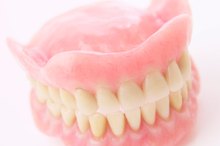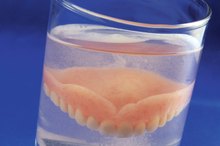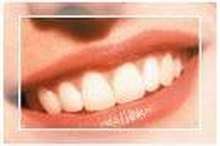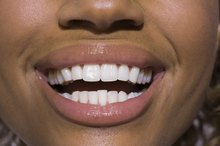What Is the Difference Between Dental Bonding & Veneers?
Dental bonding and veneers are cosmetic dentistry procedures for improving your smile 2. Both will mask imperfections in teeth, but there are differences in the procedures, materials and cost.
Description of Veneers
Veneers are thin shells of porcelain that cover the fronts of teeth, something like artificial fingernails. The American Academy of Cosmetic Dentistry, also known as the AACD, states that the function of veneers is to cover up gaps between teeth and hide crooked, misshapen or stained teeth 2. The dentist will first reshape your teeth by removing some enamel to allow for the added thickness of the veneers. Then, a molded image is sent to a dental lab where the porcelain veneers are made to exactly fit over your teeth and cover any imperfections. Finally, the veneers are applied to the natural teeth with adhesive material. The entire procedure usually requires three office visits over several weeks, reports the Columbia University College of Dental Medicine.
- Veneers are thin shells of porcelain that cover the fronts of teeth, something like artificial fingernails.
- Then, a molded image is sent to a dental lab where the porcelain veneers are made to exactly fit over your teeth and cover any imperfections.
Pros & Cons of Veneers
The Difference Between Porcelain Teeth & Acrylic Teeth
Learn More
Because veneers are custom-made for each patient's teeth, it's nearly impossible to tell the difference between veneers and natural teeth, reports the AACD. The downside: Veneers are pricey.
Description of Dental Bonding
The Academy of General Dentistry describes dental bonding as a cosmetic dentistry technique that uses a composite resin to mask imperfections 2. The resin is matched to the color of the patient’s teeth and applied freehand by the dentist. “It’s like putty and can be molded and shaped to cover up imperfections, but it doesn't have the translucent look of veneers,” says Harms. The function of dental bonding is to make chipped, discolored or short teeth look better, according to Columbia University College of Dental Medicine. Bonding can also be used to protect part of the tooth’s root that becomes exposed when teeth recede. Little or no tooth preparation is needed, says Harms.
- The Academy of General Dentistry describes dental bonding as a cosmetic dentistry technique that uses a composite resin to mask imperfections 2.
- The function of dental bonding is to make chipped, discolored or short teeth look better, according to Columbia University College of Dental Medicine.
Pros & Cons of Dental Bonding
How to Cover Missing Teeth in Your Mouth
Learn More
Bonding is easier, faster and less expensive than veneers. The entire procedure can be done in one office visit, according to the Columbia University College of Dental Medicine. As of 2010, the average cost was $200 to $700 per tooth depending on geographic location and the experience of the dentist, says Harms. And, dental bonding isn’t meant to make over an entire smile. “Bonding is best for minor imperfections and repairs, such as chips,” says Harms.
- Bonding is easier, faster and less expensive than veneers.
- amp;ldquo;Bonding is best for minor imperfections and repairs, such as chips,” says Harms.
Maintenance
"This could cause veneers, as well as dental bonding, to chip or fall off,” says Harms. However, you won’t have to change the way you floss or brush, reports the Columbia University College of Dental Medicine. With proper care, dental bonding usually last two to five years, while veneers can last 15 years or more, says Harms.
Related Articles
References
- Kimberly Harms, DDS, consumer advisor for the American Dental Association
- American Academy of Cosmetic Dentistry:Veneers
Resources
Writer Bio
Jan Sheehan is an award-winning medical and nutrition writer, having entered journalism in 1992. She is a former contributing editor for "Parents" magazine. She has also written nutrition articles for "Self," "Fitness," "Ladies' Home Journal," "Health" and other magazines. Sheehan has a Bachelor of Arts in journalism from Purdue University.









